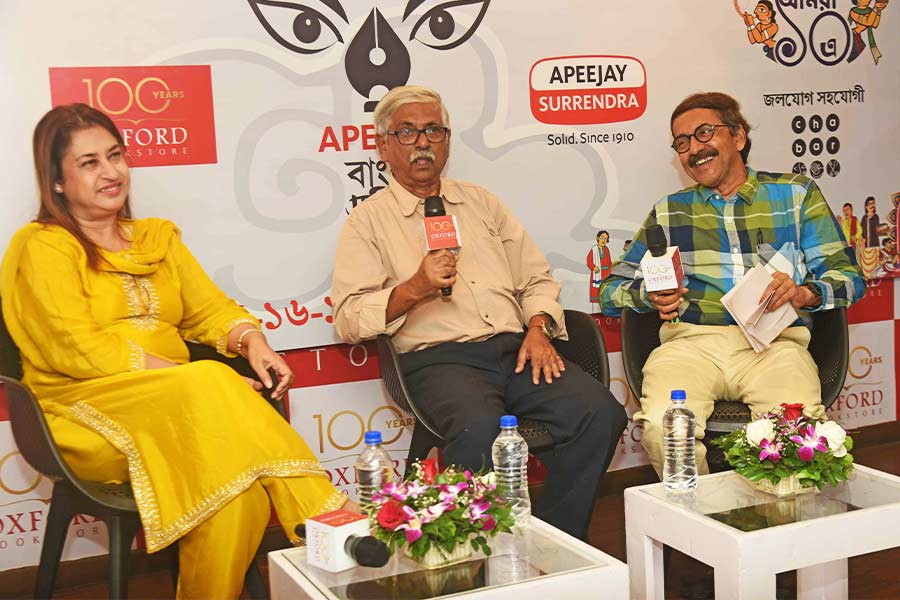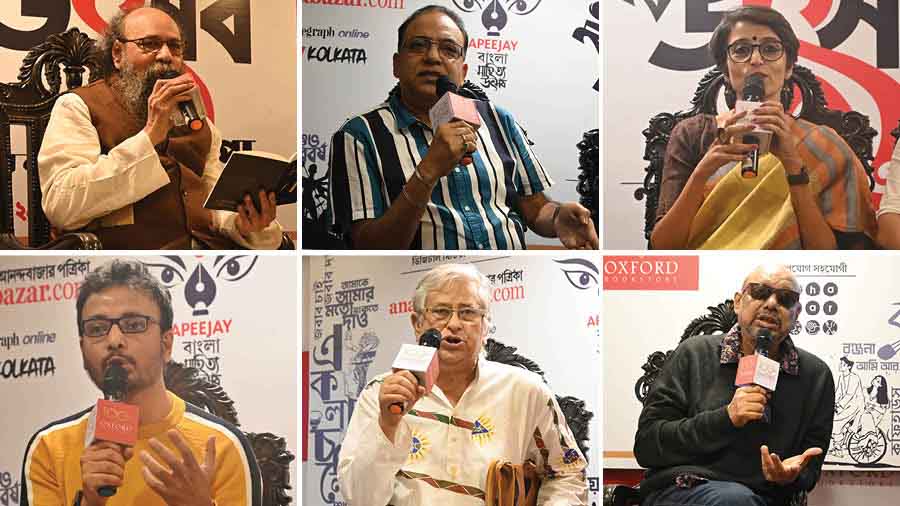A storyteller, a mentor, a gentleman — Tapan Sinha. His cinema had social commentary, but was also distanced from the disarray and disruptions of the times. For actress Satabdi Roy, Sinha was a disciplinarian with a doting side. Roy, who debuted in a Sinha film, grasped the intricacies of cinema from the Dadasaheb Phalke awardee.
When the actress was in conversation with film critic Sanjoy Mukhopadhyay and author-journalist Alokeprasad Chattopadhyay, at a session for Apeejay Bangla Sahitya Utsob (ABSU), a treasure trove of memories were unravelled. The priceless anecdotes gave attendees a chance to look into the craftsmanship of Tapan Sinha. The discussion titled Golpo Holeo Sotti: Shotoborshe Tapan Sinha was a part of the three-day literary festival held at the Oxford Bookstore in Park Street Kolkata.

Award winning filmmaker Tapan Sinha
Tapan Sinha (October 2, 1924 - January 15, 2009), along with Ray, Ritwick Ghatak and Mrinal Sen are in the league of cerebral filmmakers from Bengal. He was not just a legendary filmmaker, he was also a student of cinema. “Tapan Sinha would often visit New Empire to watch films, and would see a tall man joining him — Satyajit Ray,” shared Chattopadhyay, commencing the session with an interesting anecdote.
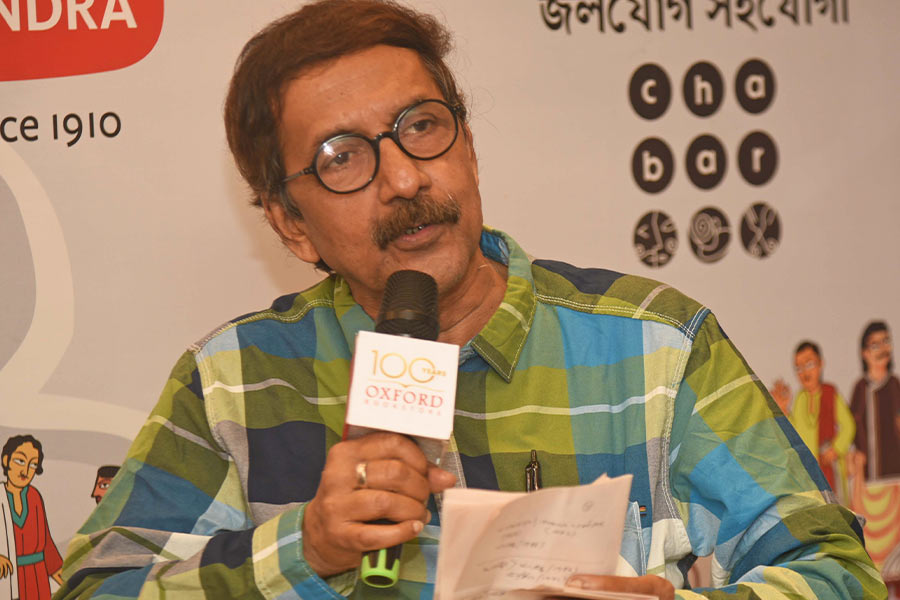
Alokeprasad Chattopadhyay at the session
Ray and Sinha shared a unique camaraderie, so much so that the Oscar winner sought Sinha’s feedback on the scripts of Pather Panchali (1955) and Nayak (1966).
Tapan Sinha, the mentor
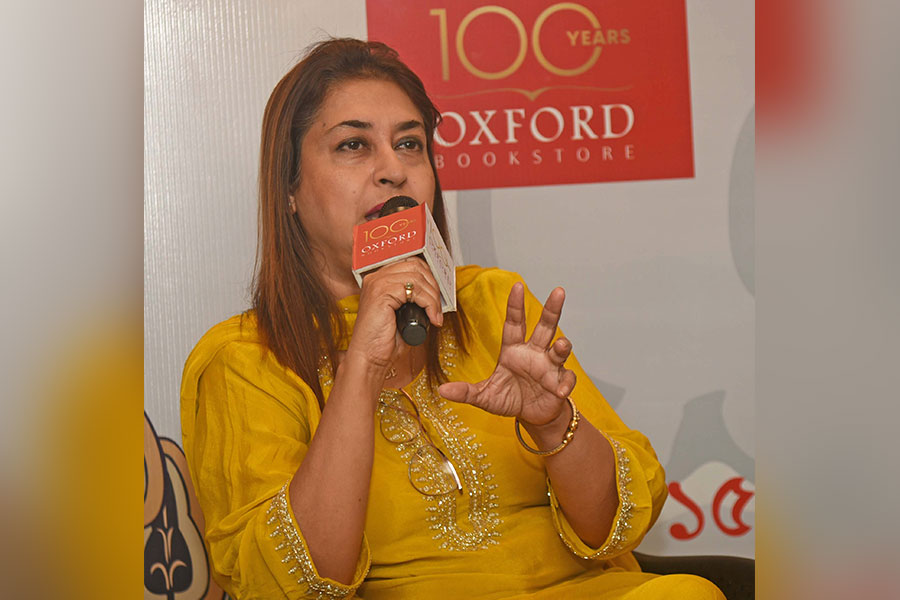
Satabdi Roy remembering her mentor-director
Satabdi Roy’s cine debut was Sinha’s Atanka in 1986. The film also brought her her first accolade — the BFJA Awards for the Best Supporting Actress. Being mentored by a director like Sinha at just 17 years old was like being in a masterclass.
Reminiscing about meeting Sinha for the first time, Roy shared how the director was keen on casting her, but had a caveat that she had to look older than her age for the role. Roy, who shared screen with Soumitra Chatterjee and Prosenjit in the political crime thriller, played the role of the matured, responsible woman. To make her fit the role, Arundhati Devi stepped in. “My hair was tied in a tight bun like the olden days, and I took matte coloured saris from my aunt and wore them. I sat in front of the photographer for profile shots, and then waited for them to arrive. When they did, I was selected,” shared Roy.
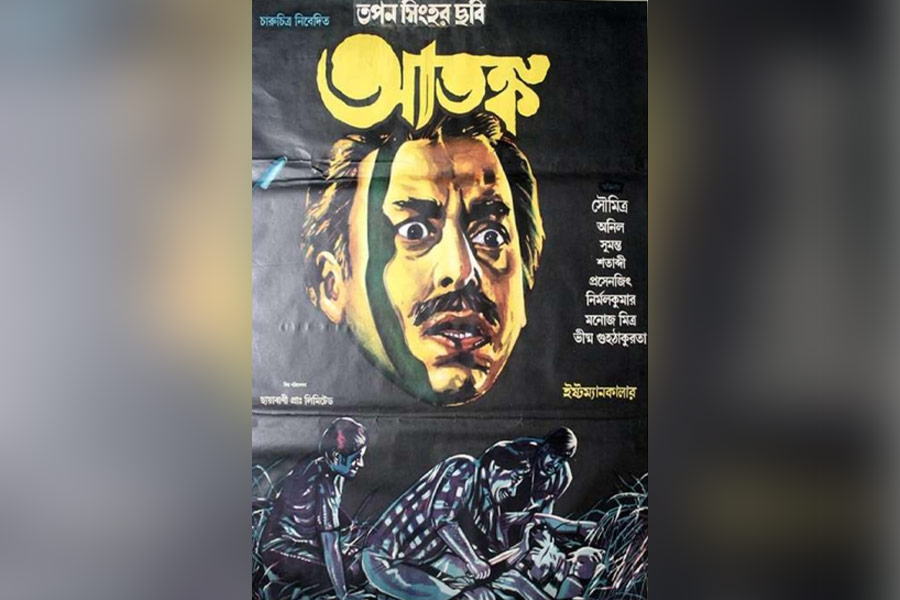
A poster of ‘Atanka’
The pre-filming workshop began with writing dialogues and rehearsing them with Soumitra Chatterjee. The actress learnt the nitty-gritties of acting, like speech delivery and dubbing from Sinha. She also had to work on her body language as Sinha wanted a different walk for the character in Atanka. Roy was asked to practise by walking with books on her head, and minimal movement of her body.
“I was so scared of rehearsing with Soumitra kaku (Chatterjee). I would say I would rehearse on the day of the shooting, but he (Sinha) would say — ‘you have to do it then anyway, why not do it now’,” shared the actress. From making adjustments during shots for the newcomer Roy, to helping her understand emotionally difficult and socially poignant scenes with the help of storyboarding — Roy’s anecdotes about Sinha painted the portrait of a sensitive man.

Sanjoy Mukhopadhyay sharing his perspectives on Tapan Sinha
Sanjoy Mukhopadhyay also joined Roy to delve into stories about Sinha. From watching Bicycle Thieves (1948) to meeting T.S. Eliot in England, Sinha had a diverse intellectual acumen. Sinha’s school of cinema was inspired by cine stalwarts like Bimal Roy and B.N. Sircar. He met Bimal Roy at the New Theatre Studio. “It was upon meeting them that he realised his job was to tell stories and not break them,” introspected Mukhopadhyay. Sinha admired films by David Lynn and decided on watching Brief Encounter (1947) that there should be a Bengali film inspired by it — Khaniker Atithi (1959).
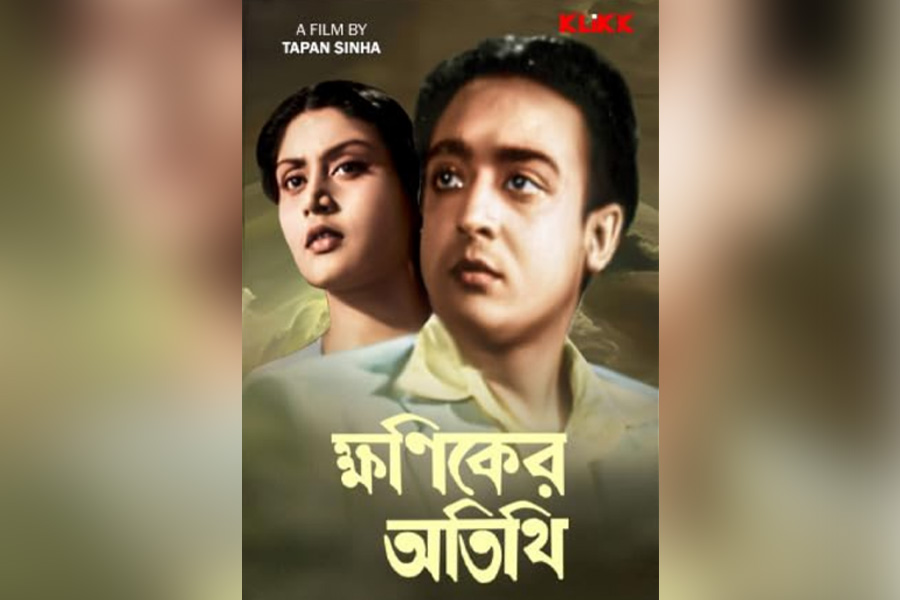
A poster of ‘Khaniker Atithi’
“Tapan Sinha knew the art of storytelling, and how to remove dismay from contemporary times. For example, the title of this session is based on his film Golpo Holeo Shotti that released in 1966 — a year of upheavals and movements. The film is magic realism written during the turbulent ’60s,” said Mukhopadhyay.
Satabdi Roy’s 50th film was Antardhan (1992), another Tapan Sinha film. The span gave the actress confidence, who would now seek permission from the director to try a thing or two. The director was a stickler for practice and rehearsal, and preferred his artistes to come prepared to the set. He was oblivious to Satabdi’s acquired stardom and keen to nurture her craft.
Tapan Sinha, the “bhadralok”
“He (Tapan Sinha) was so soft spoken that even if he was sitting nearby, I had to pay extra attention to catch what he was saying. He was very disciplined, and I have rarely met someone like him,” said Roy. The director also had a fatherly side, which Roy glimpsed during the shooting of Atanka. Since the actress was not a tea or coffee aficionado, the director took note of that and asked that she be served Horlicks every time there was a tea break. “The Horlicks turned out to be a nightmare for me! At home I would blatantly refuse to drink it, but here, there was no scope to refuse,” said Roy, affectionately laughing.
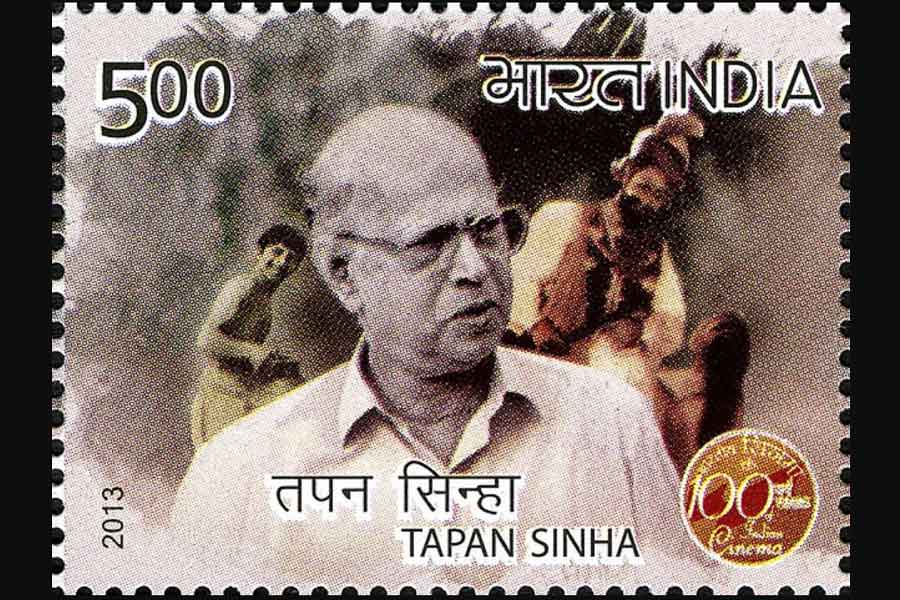
Postal stamp honouring the director
“Tapan Sinha was an institution,” said Roy, remarking that as one of the proponents of parallel cinema in India, Sinha could have been the recipient of bigger acclaim. However, Sinha, who directed popular Bengali films like Kabuliwala (1957) and Sagina Mahato (1970), and Hindi films like Safed Haathi (1978), was not keen on public relations, she reckoned.
Remarking on the man’s humility, Sanjoy Mukhopadhyay shared an interesting story about how the director did not put his name in a certain song credit because his name would appear on the credit title with Rabindranath Tagore. “He was very humble and gentle,” said Mukhopadhyay, who also mentioned on how as a probashi Bangali from Bhagapphur, Sinha had not witnessed Partition or displacement the way those in Bengal had — perhaps one of the reasons why he chose to see the light despite darkness. “None of his films ended with a negative outcome,” reflected the reputed film critic.
